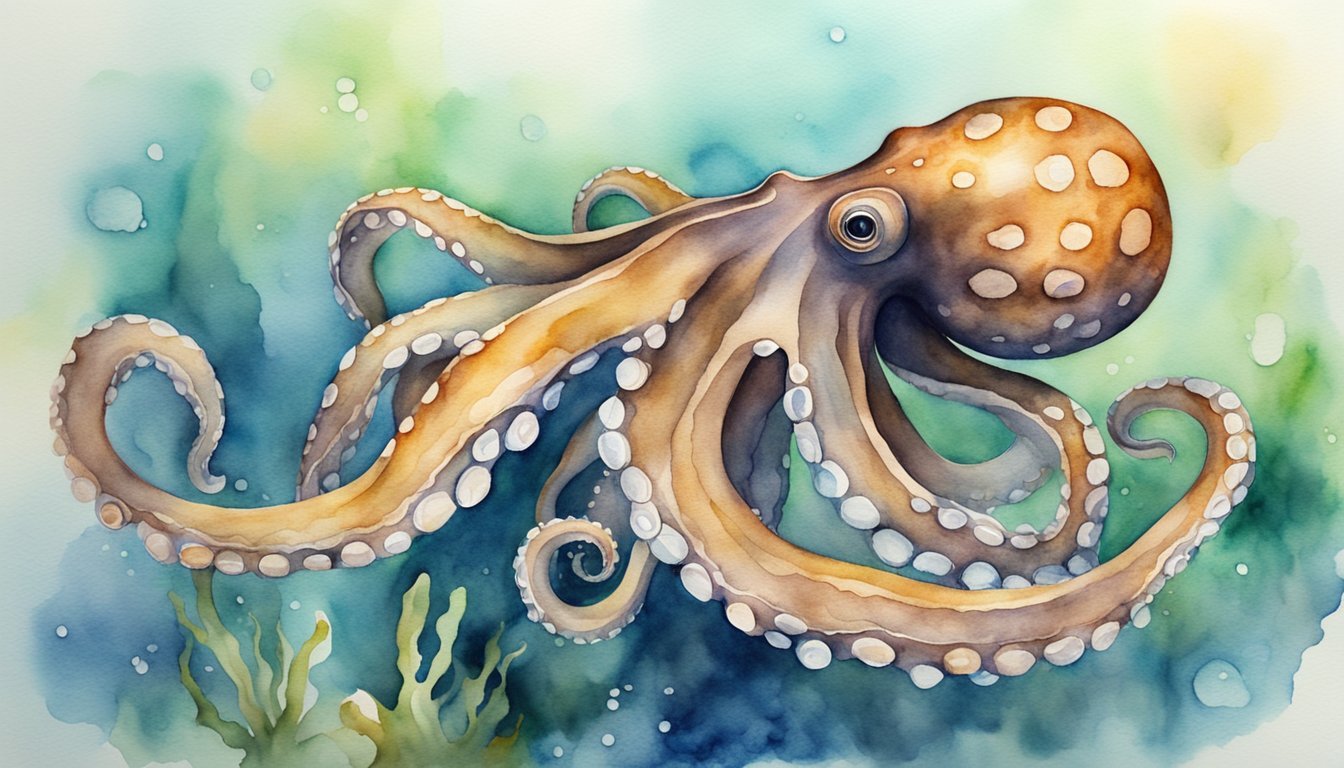Amazing Anatomy and Abilities
The octopus is a remarkable creature, endowed with astonishing features that allow it to thrive in various marine environments. From its highly functional arms to its unique cardiovascular system, each aspect of an octopus’ anatomy serves a specific purpose, facilitating both its survival and complex behaviors.
Adaptable Arms and Suction Power
Each octopus is equipped with eight arms, lined with hundreds of suckers that afford a firm grip on surfaces and prey. These arms are incredibly versatile, enabling the octopus to manipulate objects, sense its environment, and move with agility. A network of neurons runs through these limbs, granting the octopus fine control over its appendages.
Masters of Camouflage and Color Change
The ability of an octopus to change its color and texture is unparalleled in the animal kingdom. Specialized cells in their skin, known as chromatophores, enable them to blend seamlessly with their surroundings. This skill serves as a defense mechanism against predators and a strategy to ambush prey.
Unique Physical Features
Octopuses possess several remarkable physical adaptations. Their three hearts and blue blood, which is rich in hemocyanin, efficiently transport oxygen in cold, low-oxygen water. Another intriguing feature is their beak, the only hard part of their body, that allows them to crack open shellfish.
The Brain and Intelligence
Notably intelligent, octopuses show signs of curiosity, problem-solving skills, and short-and long-term memory. Their central brain works in conjunction with a cluster of nerve cells, including those located in each arm, giving them a remarkable level of neuronal capacity similar to that of a dog. Additionally, they use tools, navigate mazes, and are known to escape from enclosed spaces, demonstrating their intelligence.
A cephalopod’s mantle cavity and siphon play crucial roles in respiration and locomotion, drawing water in and forcefully ejecting it to swim. Their gills extract oxygen from this water flow. Some species of octopus can deliver venom to subdue their prey or deter potential threats. The octopus’ ability to eject ink provides an effective escape mechanism, creating a smokescreen to confuse predators.
Behavioral Traits and Life Cycle

Octopuses exhibit intriguing behavior, ranging from their hunting techniques to their remarkable intelligence. Their life cycle, too, is fascinating, with unique reproductive strategies and breathtaking survival tactics.
Feeding Habits and Diet
Octopuses are carnivores with a diet that primarily includes crabs, fish, lobsters, and shrimp. They utilize a variety of hunting methods such as pouncing on their prey or enveloping it with their arms. They have beak-like jaws that can crack shells, and some species are even capable of releasing a potent, paralyzing saliva to subdue their catch.
Reproduction and Development
During reproduction, a male octopus delivers spermatophores to the female using a specialized arm. Females lay thousands of eggs and meticulously tend to them, often not eating until they hatch. Post-hatching, the larvae drift as plankton before maturing. Without the mother’s protection, most offspring fall prey to pelagic predators.
Survival Strategies
Camouflage is a key survival strategy for octopuses, allowing them to blend in with their surroundings to evade predators like sharks. Moreover, some species are venomous, with toxins potent enough to paralyze prey or deter threats.
Social and Solitary Behaviors
Traditionally, octopuses lead a solitary life, with social interaction mostly occurring during mating periods. Known for their intelligence, they are one of the few invertebrates demonstrating tool use, such as gathering coconut shells for shelter. This intelligence is also a key factor in their complex hunting and navigation behaviors.

